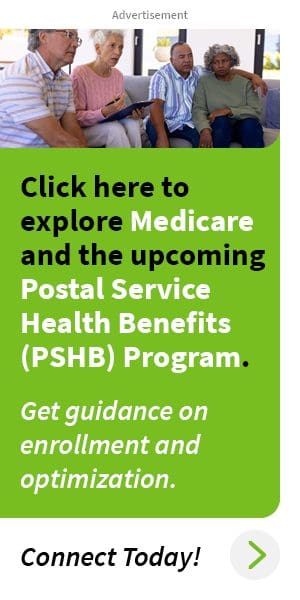Key Takeaways
- Open Season for the Postal Service Health Benefits (PSHB) is from November 11, 2024, to December 9, 2024, with coverage starting January 1, 2025.
- Double-checking your PSHB plan details before the Open Season ends can make a huge difference in your health coverage and peace of mind.
What You Need to Know About PSHB Enrollment
Enrollment for the new Postal Service Health Benefits (PSHB) program has officially begun, and it’s a big deal for USPS employees, annuitants, and their families. This new system marks a significant change as USPS transitions from the Federal Employees Health Benefits (FEHB) program to PSHB. The Open Season window runs from November 11, 2024, to December 9, 2024, giving everyone just under a month to make some important decisions.Why This Year’s Enrollment Is Different
The shift from FEHB to PSHB is more than just a simple change in name. For the first time, USPS employees and retirees will have their own health benefits program tailored specifically to their needs. While it sounds straightforward, there’s one thing that people often overlook: ensuring that the plan they choose fits their unique healthcare needs before the Open Season deadline.What Happens If You Don’t Review Your Plan?
Many people may assume their current coverage will continue without any problems. While it’s true that current enrollees in FEHB plans will be automatically enrolled in a comparable PSHB plan for 2025, automatic enrollment doesn’t mean it’s the perfect fit for you. Taking the time to review and understand the details of your new plan can be the difference between peace of mind and potential headaches down the line.PSHB Enrollment Timeline and Important Dates
When Does Enrollment Start and End?
The enrollment period for PSHB is open from November 11, 2024, to December 9, 2024. If you haven’t already taken action, now is the time to dive into the details. Any changes or new enrollments made during this window will go into effect on January 1, 2025.Automatic Enrollment and What It Means
Automatic enrollment sounds like a great safety net, and it is. However, just because you’re automatically moved into a plan that’s “similar” to what you had under FEHB doesn’t mean it’s the right choice for you. It’s essential to log in and review your new plan’s details to ensure it matches your specific healthcare needs.Getting Familiar with Your New Options
More Choices, More Considerations
PSHB offers a variety of plan options, each designed to provide different levels of coverage. While more options are generally a positive thing, they also mean you have more factors to weigh. Do you need comprehensive coverage for your entire family? Are you looking for plans with lower deductibles? These are the types of questions to consider when exploring your choices.The Importance of Medicare Enrollment
If you or any of your family members are Medicare-eligible, you’ll need to enroll in Medicare Part B to maintain your PSHB coverage. This requirement applies to Medicare-eligible USPS annuitants and their family members. However, there’s an exception for those who retired on or before January 1, 2025, and are not already enrolled in Part B. Missing this step could result in losing your PSHB coverage, which is something nobody wants to deal with.Navigating the Details of Your Coverage
Understanding Deductibles and Co-Insurance
One thing that people often overlook is the structure of deductibles and co-insurance within their new plan. While your PSHB plan may seem similar to your old FEHB coverage, some of these cost-sharing details can differ. Make sure to go over them so you know what to expect financially when accessing medical services.Check the Provider Network
Double-checking your plan’s provider network is another must. Not all plans include the same list of doctors, specialists, or healthcare facilities. Ensuring your preferred providers are part of the network can save you from unexpected out-of-pocket expenses later.How to Make Sure You’re Fully Prepared
Log In and Review Your Benefits
Before December 9, take the time to log into your benefits portal. Review the plan options available and check how each one aligns with your needs and those of your dependents. Doing this will ensure you make the most informed decision possible.Talk to Your Family Members
Don’t forget to include your family in the discussion. If your spouse or dependent children have specific healthcare needs, make sure their requirements are also considered when choosing a plan. This step helps you avoid surprises down the line.Plan for the Future
Think ahead to what the next year might bring in terms of health and financial needs. If you anticipate more medical visits or treatments in 2025, factor that into your decision. The right plan will provide not just coverage but peace of mind throughout the year.Don’t Let This One Thing Slip Through the Cracks
The single most overlooked part of PSHB enrollment is failing to act before the Open Season deadline. It’s easy to assume that automatic enrollment will handle everything for you, but failing to review your options can leave you with a plan that doesn’t fit your needs as well as it could. The deadline, December 9, 2024, is firm. Missing it means waiting until the next Open Season, and any changes made now only take effect starting January 1, 2025.Verify All Your Plan Details
Make sure to double-check everything from premiums to covered services. Even if your plan seems perfect at a glance, the small details can make a huge difference. For example, co-pays, prescription drug coverage, and specialist visit policies can all vary.Getting Started with PSHB Enrollment
Step-by-Step Guide
- Log in to Your Benefits Portal: Ensure you have access to the site where PSHB plans are listed.
- Compare Plans: Use available tools to compare different plans side by side.
- Consider Your Family’s Needs: If you have family members on your plan, ensure the coverage aligns with their medical requirements.
- Enroll Before the Deadline: Complete your enrollment by December 9, 2024, to secure your chosen plan for the upcoming year.










